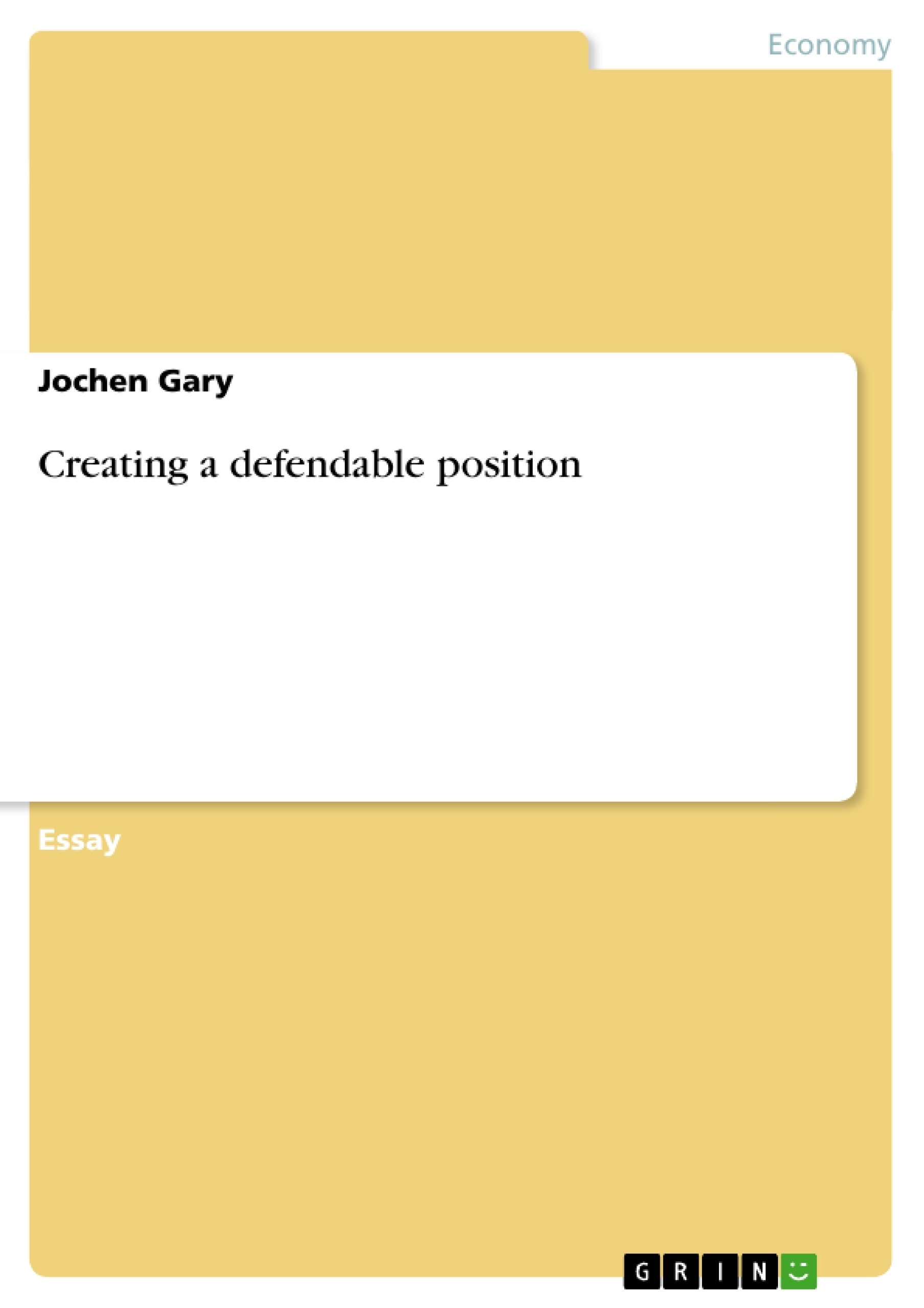Competitive advantage is the basis for most strategic decisions and its’ creation a key
issue of management. The most important concepts of competitive strategy are Michael
Porter's "five forces" and "generic strategies", published in his books Competitive Strategy
(1980) and Competitive Advantage (1985). The first sections will describe his basic ideas
and explain how the five forces are connected to the generic strategies. This is followed by
arguments in which way one strategy helps to create a defendable position in an industry. A company is not isolated, but exists in a complex network. "The five forces framework
helps identify the sources of competition in an industry or sector"1 and the important
factors in the environment of a company are: Competitive Rivalry, purchasing power of
supplier, purchasing power of buyer, threat of new entrants and of substitutes2 (Figure
1). [...]
Inhaltsverzeichnis (Table of Contents)
- Motivation
- Basic ideas
- Porter's five forces
- The three strategies
- Fight back with strategy
- Cost leadership
- Differentiation
- Focus
- Creating a defendable position through competitive advantage
- Conclusion
Zielsetzung und Themenschwerpunkte (Objectives and Key Themes)
This document aims to explore the concept of competitive advantage within a business context, drawing from Michael Porter's seminal work on competitive strategy. It delves into the five forces framework and the three generic strategies, explaining how these concepts can be utilized to achieve a defendable position within an industry.
- Competitive advantage as a key management issue
- Porter's five forces as a framework for analyzing competitive forces
- The three generic strategies: cost leadership, differentiation, and focus
- Creating a defendable position through unique and sustainable competitive advantage
- The importance of resources and capabilities in achieving competitive advantage
Zusammenfassung der Kapitel (Chapter Summaries)
- Motivation: This introductory chapter sets the stage by emphasizing the central role of competitive advantage in strategic decision-making. It introduces Porter's "five forces" and "generic strategies" as key pillars of competitive strategy, outlining the document's focus on connecting these concepts and exploring their implications for achieving a defendable position.
- Basic ideas: This chapter explores Porter's framework for analyzing industry competition, known as the five forces. It outlines the key factors impacting a company's environment, including competitive rivalry, supplier power, buyer power, the threat of new entrants, and the threat of substitutes. The chapter also introduces the three generic strategies—cost leadership, differentiation, and focus—and explains how they relate to the five forces framework.
Schlüsselwörter (Keywords)
The key themes and concepts explored in this document include competitive advantage, Porter's five forces, generic strategies, cost leadership, differentiation, focus, defendable position, sustainable competitive advantage, resources, and capabilities.
- Citation du texte
- Jochen Gary (Auteur), 2002, Creating a defendable position, Munich, GRIN Verlag, https://www.grin.com/document/16787



